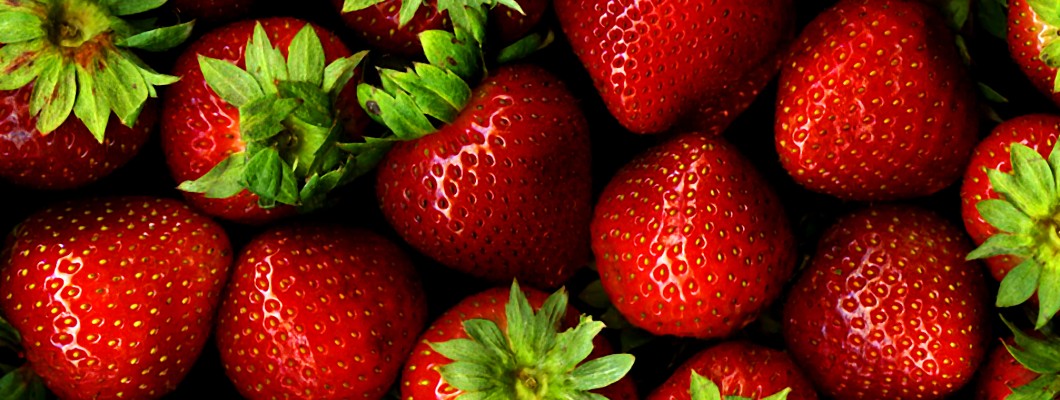
The following recipe has been kindly contributed by Vivien Lloyd, who is a renowned preserver, baker, author, and tutor. She has appeared on various TV and radio shows and is regularly featured in the press. She is the author of a number of books, including the excellent “First Preserves: Marmalades, Jams, and chutneys”; which is an authoritative guide featuring reliable recipes and explanations that are not found elsewhere. Ideal for both novices and experienced preservers, itand available now from The Bottle Co., her website and Amazon. To find out more about Vivien Lloyd, check out her website.
In this guide, Vivien gives her thoughts on syrup and cordials and shares two new recipes.
Syrups are used as fruit drinks and as flavourings for sauces and desserts. They are made from fruit juice combined with sugar.
Popular fruits for syrups include blackberries, black currants, loganberries, raspberries, red currants, and strawberries.The fruit should be a little overripe as it has more flavour and the juice is more easily extracted, but it must be fresh or the flavour will be poor.
To make a syrup, the fruit is gently broken up and heated in a bowl over a pan of boiling water until the juice begins to run freely. The pan is topped up with boiling water. This prevents the fruit from being overcooked, which affects the colour and fresh flavour. Usually, it is not necessary to add water to the fruit, except for blackberries (300 mlper 2.75 kg) and black currants (300 ml per 450 g). As soon as the juice runs out, the fruit is crushed with a spoon and strained through a jelly bag. For a clear syrup, do not squeeze the jelly bag, but if clarity is not a priority, squeeze the bag to extract as much of the juice as possible. The juice is measured, re-heated, and 345 grammes of sugar are added for every 600 ml of juice.
To guarantee a shelf life of at least a year, the syrup should be sterilised in a water bath. If you are a forager and want to make rose hip syrup, be aware that it tends to have a very short shelf life. Use small bottles, as the syrup may not keep for more than a week once opened. Always sterilise the contents of the bottles using a water bath.
Strawberry Syrup
It makes around 600ml
1kg clean, ripe strawberries ( hulled)
Granulated sugar
1. Heat the fruit in a bowl over a pan of boiling water until the juice begins to run freely. Crush the fruit with a spoon and strain through a jelly bag.
2. Measure the juice. For every 600 ml of juice, weigh out 345 g of granulated sugar.
3. Gently re-heat the juice and add the sugar. Stir until the sugar has dissolved. To conserve the fruit flavour, do not boil the syrup.
4. Pour the syrup into clean glass bottles with screw-top lids. Fill the bottles to within 2.5cm from the brim. Screw the tops on loosely. Do not seal the bottles.
5. Stand the bottles on a trivet or wads of newspaper in a large, tall pan. Add cold water up to the lower level of the lids. Heat the water to simmering (88 °C/190 °F) and maintain the temperature for 20 minutes.
6. Protecting your hands: carefully remove the bottles, and to prevent cracking, place them on a wooden board. Tighten the lids immediately and leave them to cool.
Cordials
In England, during the seventeenth and eighteenth centuries, a cordial was known as a ‘rob’. Usually made with alcohol, the juices from wild fruits or an infusion of leaves or flowers were mixed with honey and boiled. These alcoholic drinks were regarded as medicinal. When sugar became cheaper to buy in the nineteenth century, cordials became more popular than syrups. Present-day recipes for cordials are generally made without alcohol.
Competitions
As a judge, I look for a clear glass bottle, preferably with a screw-top lid and an airtight seal. The colour should be bright, and the bottle should be filled to within 2.5cm from the top. The consistency should not be thick or clotted, but a genuine pouring consistency. I always smell a syrup or cordial, hoping for a rich aroma. The flavour should stand a dilution of 1 part cordial or syrup to 5 parts water, so I tasted them diluted.
Lemon Geranium Cordial
It makes around 900ml
600ml water
170g caster sugar
Juice of two large lemons
15-20 lemon-scented geranium leaves.
1. Bring the water to a boil in a saucepan. Add the sugar and lemon juice and stir until dissolved. Remove from the heat and add the geranium leaves.
2. Cover the pan and leave it to infuse for 60 minutes. Taste to check if the flavour is strong enough. If not, reheat the liquid, add a few more leaves and infuse once more.
3. Discard the leaves and strain the cordial through a sieve lined with thin cotton muslin.
4. Pour the cordial into clean bottles, to within 2.5cm from the brim. Screw the tops on loosely. Do not seal. Stand the bottles on a trivet or wads of newspaper in a tall pan. Add cold water up to the lower level of the lid. Heat the water to simmering (88 °C/190 °F) and maintain this temperature for 20 minutes.
5. Protecting your hands, carefully remove the bottles from the pan. To prevent cracking, stand them on a wooden board and tighten the lids immediately. Leave until it is cold.
-1000x562.jpg)
